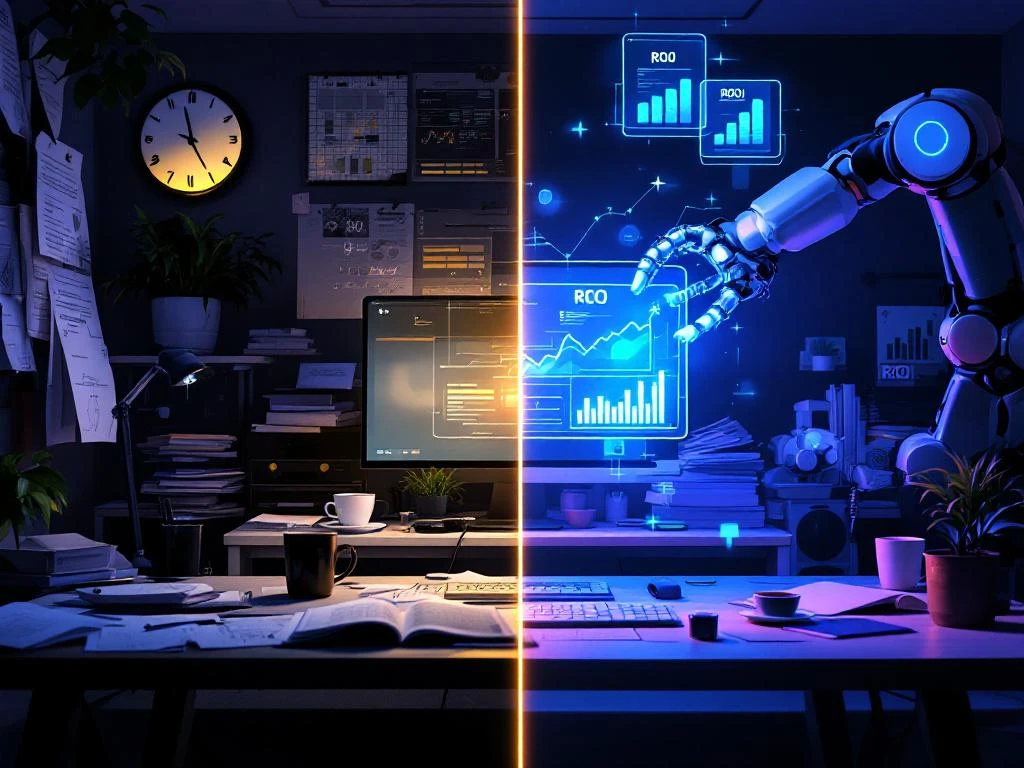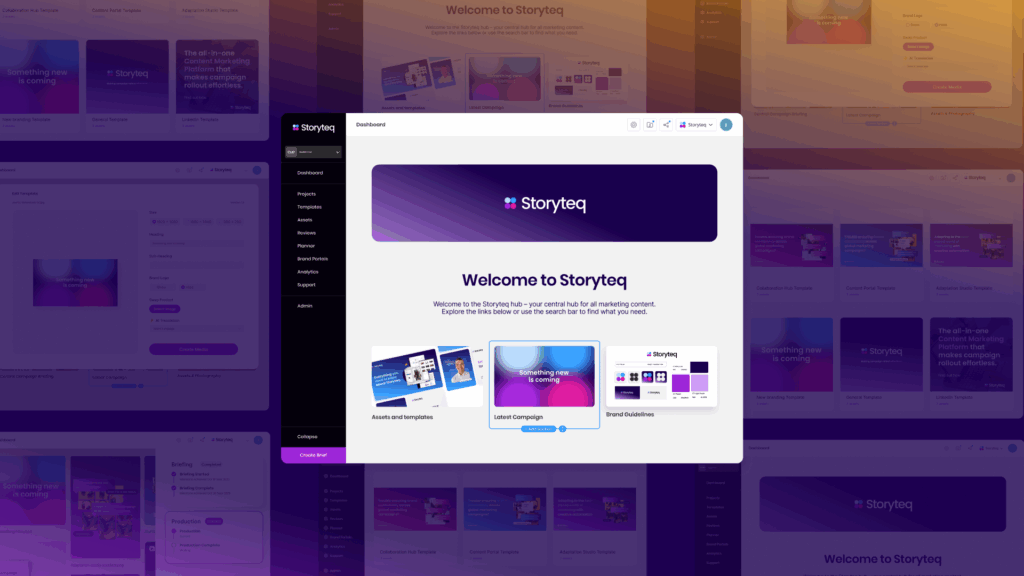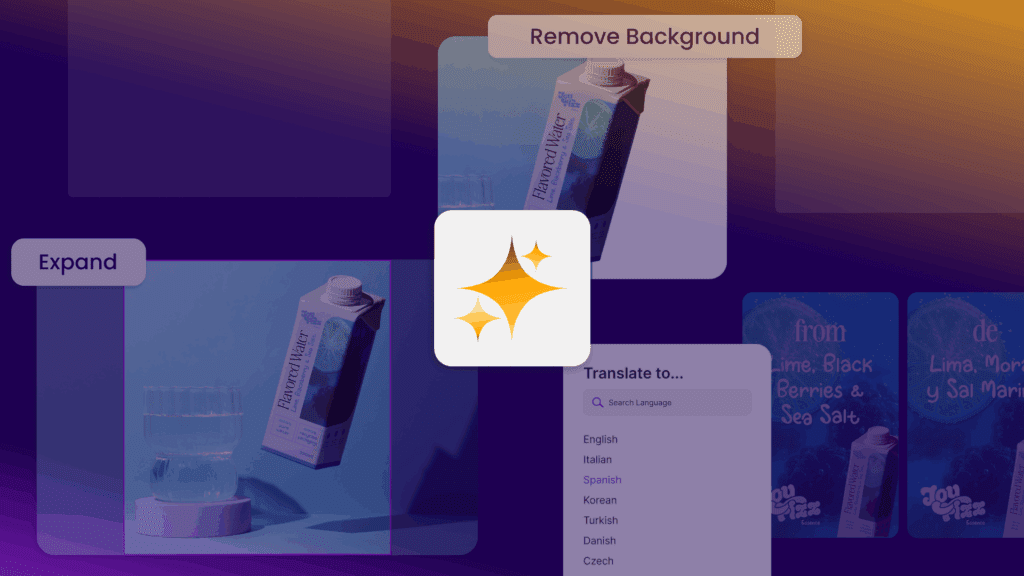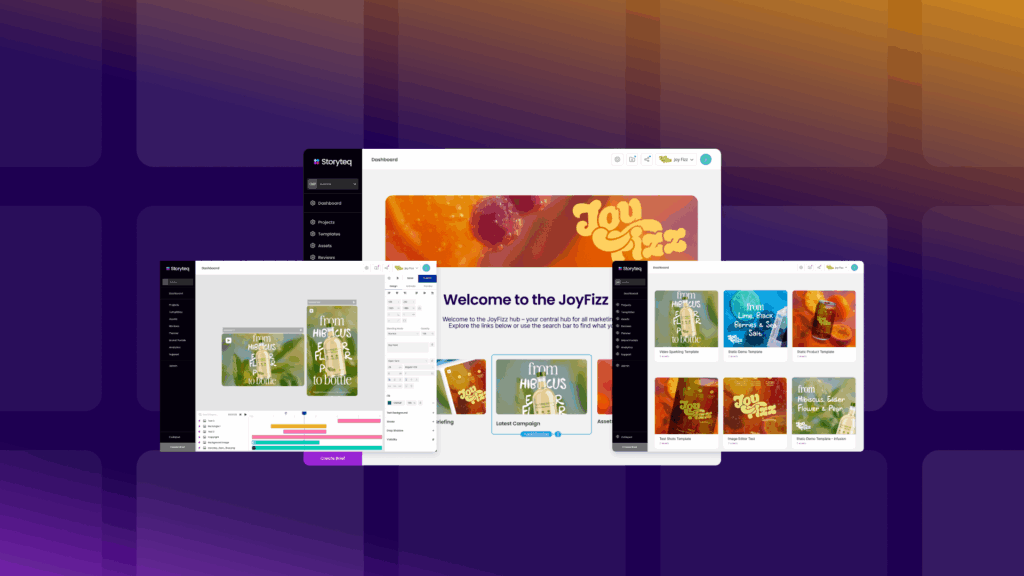AI content generation can significantly improve content ROI by reducing production costs, increasing content volume, accelerating time-to-market, and enabling personalization at scale. Organizations implementing AI content tools report 30-40% cost reductions while producing up to 10x more content variations. However, the ROI impact varies based on implementation quality, content type, and how effectively teams balance automation with human creativity and oversight.
What is the actual impact of AI content generation on marketing ROI?
AI content generation typically improves marketing ROI by reducing production costs by 30-40% while increasing content output by 3-10x. This efficiency gain allows marketing teams to reallocate resources from repetitive production tasks to strategic activities that drive higher returns.
The ROI impact manifests in several key areas:
- Resource optimization: Teams shift from manual production to strategy, creativity, and optimization. This reallocation improves both efficiency and effectiveness metrics.
- Production acceleration: Content creation cycles shrink from weeks to days or even hours, allowing faster market response and more testing opportunities.
- Scale expansion: Marketers can create more variations and personalized content without proportional cost increases, expanding reach while maintaining efficiency.
- Performance improvement: With more content variations available for testing, campaigns can identify winning messages faster, improving overall performance metrics.
Marketing organizations that systematically implement AI content generation report seeing improved return metrics across channels. This improvement stems not just from cost reduction but from the ability to create more targeted, relevant content that performs better with audiences.
However, the impact varies significantly based on implementation approach. Organizations that view AI purely as a cost-cutting tool typically see modest ROI improvements. Those that leverage AI to expand capabilities, enable personalization, and accelerate testing cycles generally experience much stronger returns.
How does AI content generation change the economics of content creation?
AI content generation fundamentally transforms content economics by drastically reducing the marginal cost of content variations while increasing production capacity. This shifts the economic model from linear cost scaling to exponential output potential with fixed investment.
The financial transformation occurs across several dimensions:
- Cost-per-asset reduction: Traditional content production ties costs directly to volume. AI tools can generate multiple variations at minimal incremental cost, reducing the average cost-per-asset by 40-60% in many cases.
- Resource reallocation: Creative teams can focus on high-value tasks like strategy and concept development while AI handles repetitive adaptation work. This improves the return on human resource investment.
- Budget redistribution: Marketing budgets shift from production execution to performance optimization, with 75% of campaign ROI coming from creative quality rather than media placement.
- Scaling without proportional costs: Organizations can expand content output across markets, channels, and audience segments without equivalent budget increases.
The most significant economic shift is from a scarcity mindset to an abundance approach. When content production capacity increases 3-10x while costs decrease, marketers can implement testing and optimization strategies previously impossible due to resource constraints.
This transformation also changes how organizations value creative work. Rather than treating creative production as a cost center, AI-enabled teams position creativity as a performance driver with measurable impact on marketing outcomes and business results.
What are the measurable benefits of implementing AI in content workflows?
Implementing AI in content workflows delivers measurable benefits across production efficiency, content volume, quality consistency, and adaptation capabilities. Organizations typically see 40-70% time savings in production processes while significantly expanding output capacity.
Key measurable improvements include:
- Time efficiency: Production cycles that previously took weeks can be completed in days or hours. This acceleration applies to both initial creation and subsequent adaptations.
- Volume capacity: Teams can produce 3-10x more content variations with the same resources, enabling more comprehensive testing and personalization strategies.
- Consistency metrics: Brand guideline adherence improves as AI systems maintain visual and messaging standards across all content variations.
- Adaptation speed: Market-specific or channel-specific content can be generated in minutes rather than days, improving campaign agility.
- Error reduction: Automated workflows reduce manual handoffs and associated error rates, improving quality consistency.
Beyond these operational metrics, organizations also measure improvements in campaign performance. With more content variations available for testing, teams can identify better-performing messages and creative approaches faster.
The ability to react quickly to performance data represents another measurable benefit. When AI systems can generate new content variations rapidly, marketing teams can capitalize on successful approaches by creating additional variations of high-performing content without production delays.
These benefits compound over time as teams develop more sophisticated AI implementation strategies and build libraries of high-performing templates and components.
How do companies effectively measure ROI from AI content systems?
Companies effectively measure ROI from AI content systems by establishing comprehensive metrics that track both efficiency gains and performance improvements. The most accurate measurement approaches combine production metrics, content performance data, and business impact indicators.
Effective measurement frameworks include:
- Production efficiency metrics: Track time savings, cost-per-asset reduction, and volume capacity increases to quantify resource optimization.
- Content performance tracking: Measure how AI-generated content performs compared to traditionally produced content across engagement, conversion, and revenue metrics.
- Test velocity metrics: Calculate how many more creative approaches can be tested in the same timeframe, and the resulting performance improvements from identifying winners faster.
- Opportunity cost analysis: Evaluate the strategic activities now possible with resources freed from production tasks.
- Scaling economics: Measure how content output scales compared to cost as campaigns expand across markets, channels, and segments.
Leading organizations implement before-and-after comparisons when adopting AI content systems. This approach establishes clear baselines for production costs, timelines, and performance metrics before implementation, then tracks changes in these metrics after adoption.
The most sophisticated measurement approaches connect AI content capabilities directly to business outcomes. This involves tracking how increased personalization, testing capacity, and market responsiveness translate into improved customer acquisition, retention, and lifetime value metrics.
Accurate ROI measurement requires looking beyond simple cost reduction to capture the full value of improved content strategies enabled by AI capabilities.
What quality challenges affect the ROI potential of AI-generated content?
Several quality challenges can undermine the ROI potential of AI-generated content, including brand voice inconsistency, creative limitations, oversight requirements, and integration complexities. These challenges can increase hidden costs and reduce performance benefits if not properly addressed.
The most significant quality concerns include:
- Brand voice maintenance: AI systems may struggle to maintain consistent brand voice and tone across all content variations, potentially diluting brand identity.
- Creative limitations: Current AI tools excel at variations but may lack original creative thinking, potentially resulting in derivative or predictable content.
- Human oversight requirements: Quality control processes require human review, which can reduce efficiency gains if not streamlined effectively.
- Technical integration challenges: Connecting AI content systems with existing workflows and distribution channels often involves complexity that can delay ROI realization.
- Template dependency: Over-reliance on templates can result in content that feels formulaic, reducing engagement and performance over time.
Organizations achieving the highest ROI from AI content generation implement specific strategies to address these challenges. This includes developing clear brand guidelines for AI systems, creating modular content components that combine flexibility with consistency, and establishing efficient review workflows.
The most successful implementations maintain a balanced approach, using AI for appropriate tasks while preserving human creativity for concept development, strategy, and quality assurance. This balanced approach maximizes efficiency while maintaining the creative quality that drives performance.
Addressing these quality challenges effectively is often what separates high-ROI implementations from those that deliver limited returns.
Conclusion
AI content generation represents a transformative approach to improving content ROI, offering significant efficiency gains while expanding creative possibilities. The technology fundamentally changes what’s possible in content marketing, enabling personalization at scale and rapid testing that was previously impractical.
The most successful organizations view AI not merely as a cost-reduction tool but as a capability amplifier that enables more sophisticated content strategies. By focusing on both efficiency metrics and performance improvements, these companies achieve compounding returns on their AI content investments.
At Storyteq, we’ve seen firsthand how AI-enabled content automation helps global brands achieve impressive results – from 40% reductions in cost-per-asset to dramatic improvements in campaign performance through increased personalization and testing.
As you consider how AI content generation might improve your own content ROI, focus on building a balanced approach that leverages automation for efficiency while maintaining the human creativity that drives genuine connection with your audience.
Ready to explore how AI-powered content automation could transform your marketing operations? Request a demo of our platform to see how we help leading brands achieve remarkable content ROI through intelligent automation.
Frequently Asked Questions
How do I start implementing AI content generation in my marketing workflow?
Begin by identifying repetitive content creation tasks that consume significant resources, such as social media updates, product descriptions, or email variations. Select an AI tool that specializes in your specific content needs and start with a small pilot project. Train your team on the new workflow, establish clear guidelines for AI usage and human oversight, and gradually expand implementation as you measure results. Most organizations find success by starting with structured content types before moving to more complex creative assets.
What are the most common mistakes companies make when implementing AI content tools?
The biggest implementation mistake is treating AI as a complete replacement for human creativity rather than as an enhancement tool. Other common errors include inadequate training of AI systems on brand voice, failing to establish clear review workflows, not measuring baseline metrics before implementation, and expecting immediate perfection. Organizations also frequently underinvest in integration with existing systems or attempt to implement across all content types simultaneously instead of starting with the most suitable applications.
Which types of marketing content typically see the highest ROI from AI generation?
Content types with high volume needs and structural consistency generally yield the highest ROI, including product descriptions, social media posts, ad copy variations, and personalized email content. Performance marketing assets benefit significantly because AI can generate multiple variations for A/B testing. Localization and adaptation of existing content across markets also show exceptional returns. In contrast, highly conceptual content, brand positioning work, and complex storytelling usually require more human involvement and show lower immediate ROI from AI implementation.
How can marketing teams balance AI efficiency with maintaining creative quality?
Successful balance comes from clearly defining which aspects of content creation should be AI-driven versus human-led. Establish a hybrid workflow where humans focus on strategy, core messaging, and creative direction while AI handles variations, adaptations, and scaling. Implement tiered review processes where routine content receives lighter oversight while high-stakes assets get more thorough evaluation. Regularly audit AI outputs against brand standards and performance metrics, and continue investing in creative team development so their skills evolve to complement AI capabilities rather than compete with them.
What organizational changes are needed to maximize ROI from AI content tools?
Beyond technology implementation, organizations typically need to restructure content teams around new capabilities. This includes creating AI specialist roles, retraining writers and designers to become prompt engineers and content strategists, and developing new approval workflows. Marketing operations often requires adjustment to handle increased content volume and testing capacity. Budget allocation should shift from production execution to strategy and optimization. Most importantly, performance measurement systems need updating to capture both efficiency gains and effectiveness improvements enabled by AI content capabilities.
How do I address concerns about AI-generated content lacking originality or authentic brand voice?
First, invest time in properly training AI systems with comprehensive brand guidelines and examples of your best-performing content. Create a library of brand-specific prompts that consistently produce on-brand results. Implement a content mixture strategy where foundational, high-originality content is human-created, then AI scales and adapts these proven approaches. Establish clear quality criteria for human reviewers to evaluate AI outputs consistently. Finally, continually refine your approach by comparing performance metrics between human-created and AI-generated content to identify quality gaps and improvement opportunities.
What future developments in AI content generation should marketers prepare for?
Marketers should prepare for multimodal AI systems that seamlessly generate coordinated text, images, and video content from single prompts. Expect increasingly sophisticated personalization capabilities that can create truly individualized content experiences at scale. AI systems will develop better understanding of brand voice and creative nuance, reducing oversight requirements. We'll also see improved integration with performance data, enabling AI to automatically optimize content based on real-time results. Organizations should build flexible content operations that can quickly adapt to these advancing capabilities while maintaining appropriate creative governance.



